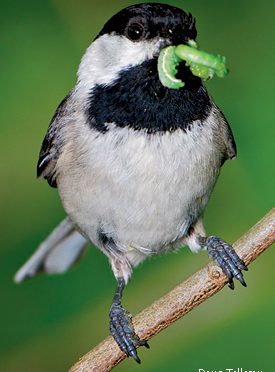Category: In The Garden
-
How A Changing Climate Will Change Gardens
As the world warms and weather patterns shift, the study by the Royal Horticultural Society (RHS) concludes that British gardens will need to adapt. (Click on title for full story.)
-
Our Wildlife-Friendly Gardens Are Killing More Birds
Are wildlife-friendly yards that are filled with native plants and tall trees less or more deadly to wild birds? Previous work hinted that bird feeders might actually increase bird-window collisions (ref), so the obvious follow-up question to that work became; “Does the distance of feeders from windows affect the number of collisions? (Click on title…
-
Diseased Historic Trees Being Saved By Garlic Injections
Injecting trees with a concentrated form of garlic might help save trees in the UK from deadly diseases. Widespread use of the injection process is impractical and expensive. But it could potentially help save trees of historic or sentimental value. (Click on title for full story.)
-
Predicting Urban Tree Health From Impervious Surface Cover
The impervious surface threshold can be used to identify planting sites where red maples will thrive. Trees surrounded by < 33% impervious surface cover (at 25 m) will most likely be in good or excellent condition. Trees surrounded by 33% - 66% are likely to be in fair condition. Trees surrounded by 67% or more…
-
Nursery Pots May Doom Reforestation Efforts To Failure
The experimental protocols revealed that traditional plastic containers led to an abundance of root growth in the bottom of containers, which led to a paucity of lateral roots following transplanting. Lateral roots are critically important for stabilizing plants in tropical cyclone force winds (hurricanes and typhoons). (Click on title for full story.)
-
Wine Grape Vineyards Benefit From Being Bird-Friendly
Insectivorous cavity-nesting birds can be encouraged to occupy vineyards by giving them nest boxes. New research documents that these birds reciprocate by providing significant eco-friendly pest control services to winegrape growers. (Click on title for full story.)
-
A “Safe” and “Natural” Insect Control That Also Kills Bees
The results we present here show that the native British bumble bee B. terrestris is remarkably susceptible to two commercially available entomopathogenic nematode pest control products. Both products caused very high levels of bee mortality after only 72 h of exposure, with the first deaths evident after 48 h. This result was unexpected: the susceptibility…
-
Orchards Can Reduce Pesticide Use By Planting Flowers
Researchers have found they can control one of fruit growers’ more severe pests, aphids, with a remarkably benign tool: flowers.
-

Birds Choose Backyards With Native Plants
When nonnative plants replace natives, entire food webs are disrupted by the loss of specialized plant-eating insects—the most important food for animals ranging from other insects and spiders to reptiles and amphibians to mammals and birds.
-
The Natural GMO: An example of a naturally transgenic food crop
This finding draws attention to the importance of plant–microbe interactions, and given that this crop has been eaten for millennia, it may change the paradigm governing the “unnatural” status of transgenic crops.
